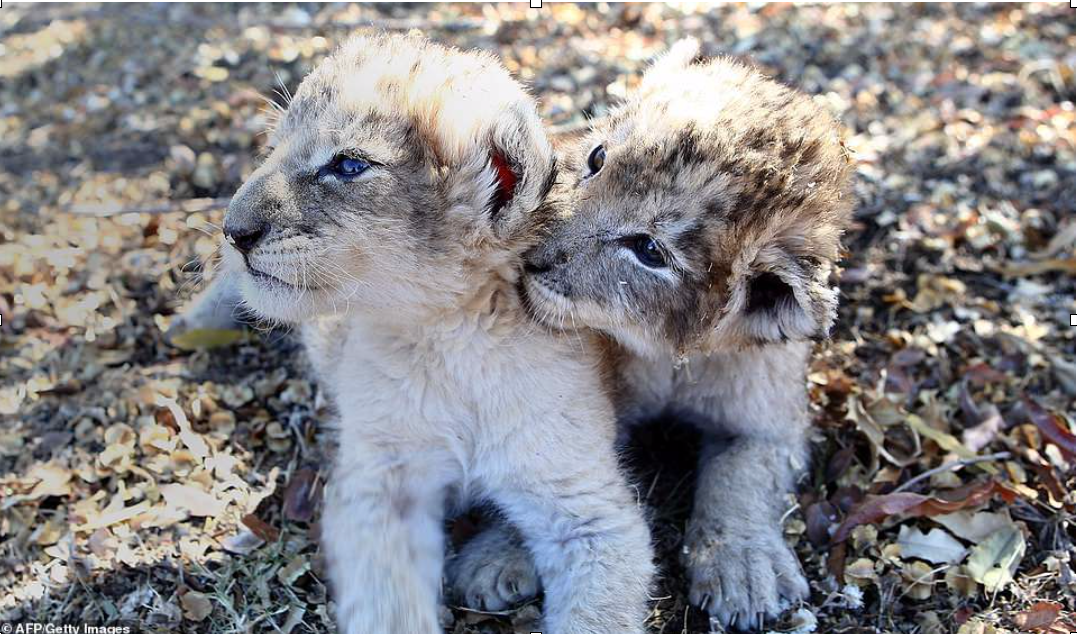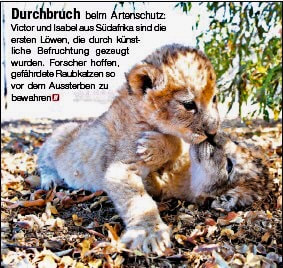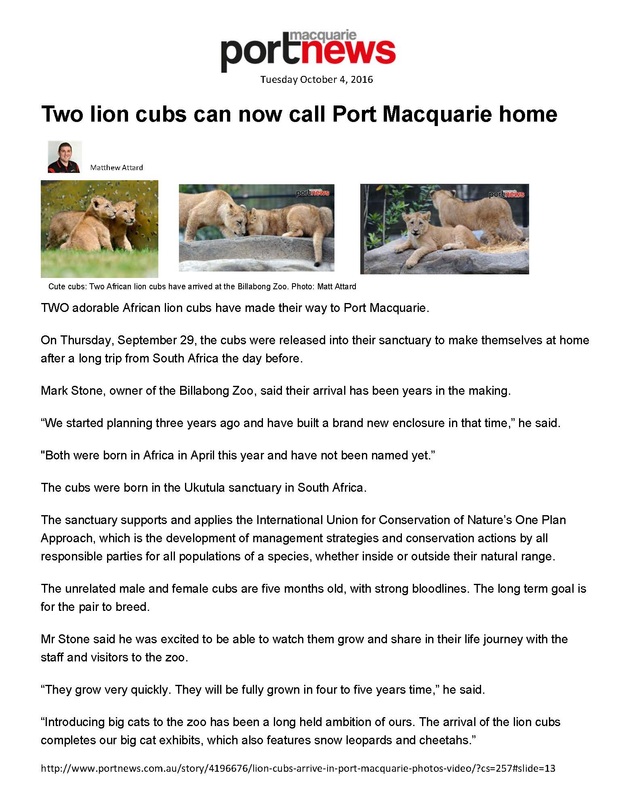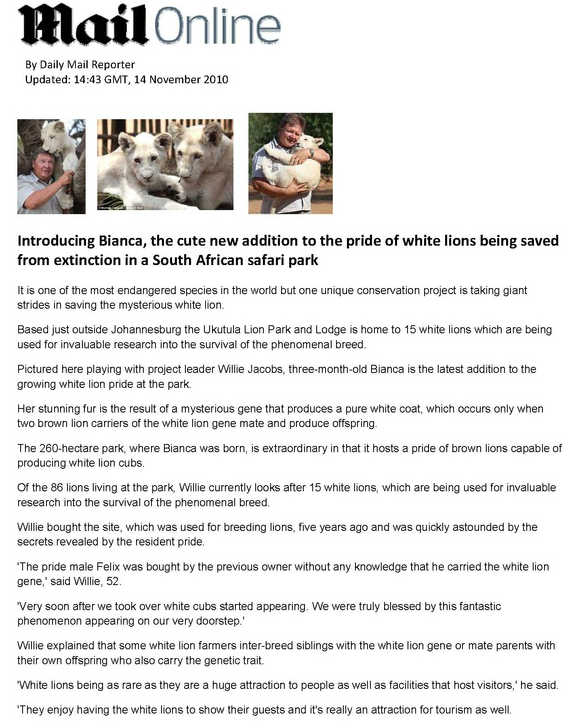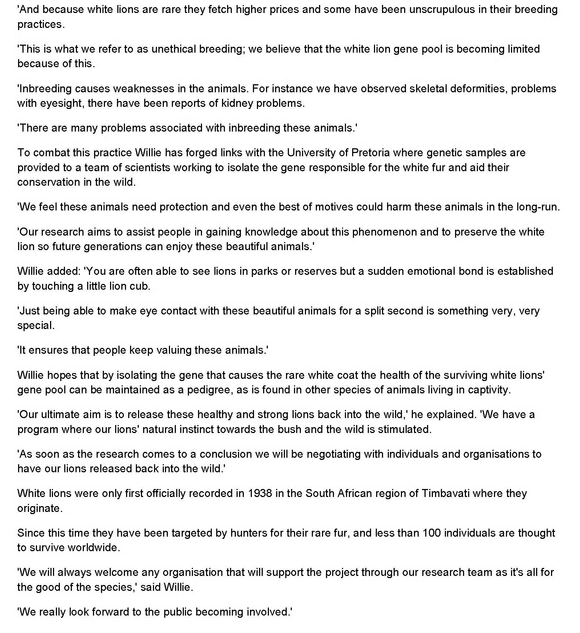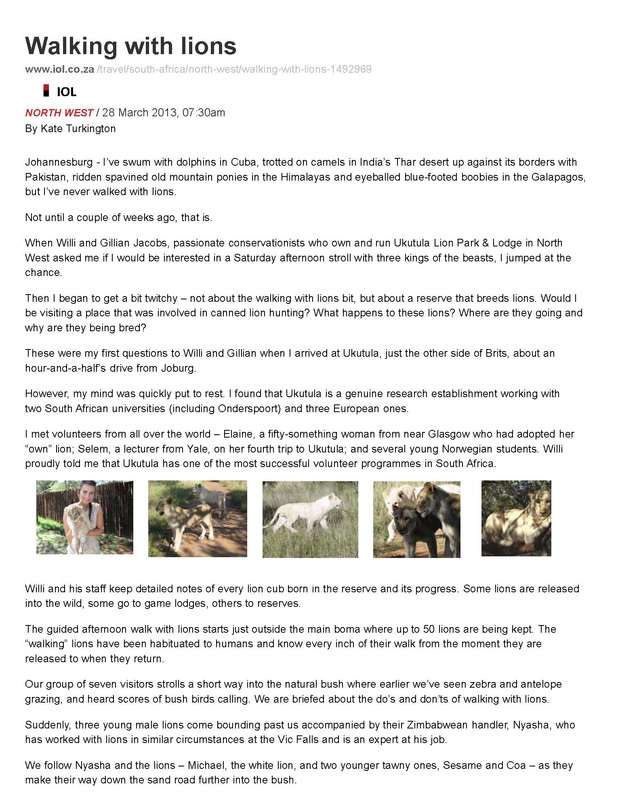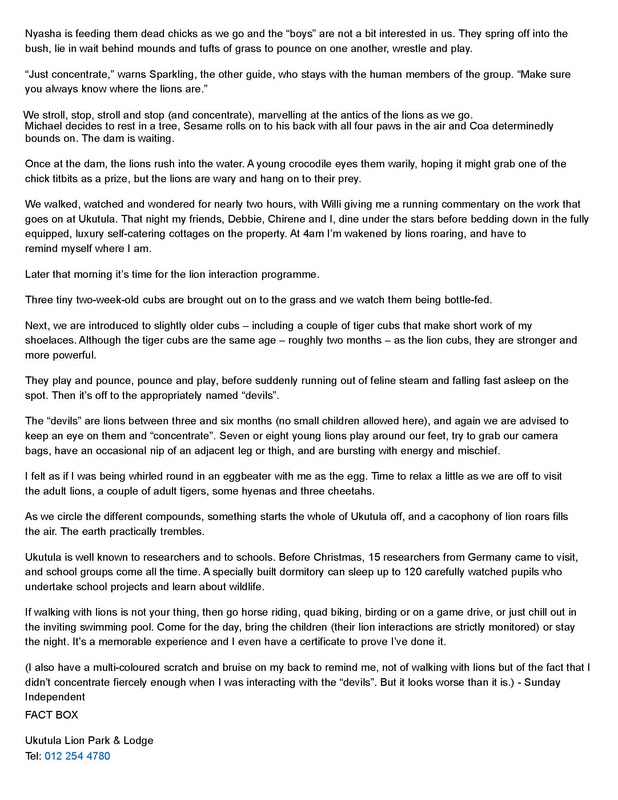media room

World's first test tube lion cubs Victor and Isabel are 'healthy and normal' raising hopes more big cats could be saved from extinction including species of tiger, lynx and snow leopard
By AFP and TIM STICKINGS FOR MAILONLINE
PUBLISHED: 05:27 EST, 1 October 2018 | UPDATED: 07:52 EST, 1 October 2018The world's first test tube lion cubs are 'healthy and normal' five weeks after they were born in South Africa, raising hopes that other big cats including species of tiger and snow leopard could be saved from extinction.
A lioness gave birth to Victor and Isabel at a game reserve in August after she was artificially impregnated with sperm from a healthy lion, following 18 months of intensive trials.
Lions are extinct in 26 African countries and numbers in the wild have plummeted 43 percent over the last two decades, with roughly only 20,000 left.
How does artificial insemination work?
Scientists hope artificial insemination could be used to save endangered animals from extinction.
Human couples who opt for the technology see specialists who use ultrasounds, blood tests or ovulation kits to check to see if a woman is ovulating at the time of her procedure.
A sample of sperm is then required from the woman's chosen donor; the doctor puts the sample in a catheter that is threaded through the woman's vagina and cervix before reaching her uterus.
The success rate for the procedure varies. The following can affect the chances a woman has of becoming pregnant thanks to artificial insemination:
'These are the first ever lion cubs to be born by means of artificial insemination - the first such pair anywhere in the world,' said the University of Pretoria, where scientists are researching female lions' reproductive systems.
The two cubs born on August 25 are healthy and normal, said Andre Ganswindt, the director of the university's mammal research institute. He said: 'We collected sperm from a healthy lion, and luckily it was successful. There were several attempts, but surprisingly it didn't take too much effort’.
The breakthrough could be repeated, he said, with scientists hoping the technique can be used to save other endangered big cats. 'If we are not doing something about it, they will face extinction,' he said.
He said that rather than move the lions for breeding, the new technique would let breeders transport the sperm to receptive females, as is done with the captive elephant population in North America and Europe.
The findings are part of research being done by Isabel Callealta, a Spanish veterinarian and PhD student at the University of Pretoria.
The female cub was named after her and the male cub after her fiancé Victor. Callealta personally trained the lions to lie next to a fence, where they would freely give blood samples to determine hormonal levels and assess the perfect time for insemination. She said: 'This was a world first for lions and now we start a journey and the idea is to improve or knowledge and understanding of the big cats and move the research quickly forward. The research will hopefully mean we can start working towards carrying out similar procedures on some of the much rarer big cats like the snow leopard and the tiger in the future'.
There are thought to be less than 4,000 tigers left in the wild in Asia and less than 7,000 snow leopards in the mountains of Central Asia and as few as 300 Iberian Lynx in Spain.
The research was carried out at the Ukutula Conservation Center, 50 miles north-west of Pretoria in South Africa's North West province.
Imke Lueders, a scientist involved in the study, said 'having the first lion cubs ever born from artificial insemination in their natural range country, and not in a zoo overseas, is an important milestone for South Africa'.
'Assisted reproduction techniques are another tool in our conservation box, of course not a sole solution, but another technology that we can use to protect endangered species,' she said.
Andre Mentz, a prominent lion breeder in South Africa's Free State province, described the birth of the cubs as 'very revolutionary’.
But animal welfare organisations are less enthused.
'The captive lion breeding industry in South Africa is exploitative and profit-driven,' said Mark Jones of the Born Free Foundation.
'It generates its income through interaction activities (lion cub petting and lion walks), canned trophy hunting of lions and the lion skeleton trade, while contributing nothing to lion conservation,' he added.
A group of 18 international and African conservation organisations wrote a letter addressed to the scientists saying they do not support the study, but did acknowledge artificial insemination could help other imperilled wild cats like the cheetah.
Scientists hope artificial insemination could be used to save endangered animals from extinction.
Human couples who opt for the technology see specialists who use ultrasounds, blood tests or ovulation kits to check to see if a woman is ovulating at the time of her procedure.
A sample of sperm is then required from the woman's chosen donor; the doctor puts the sample in a catheter that is threaded through the woman's vagina and cervix before reaching her uterus.
The success rate for the procedure varies. The following can affect the chances a woman has of becoming pregnant thanks to artificial insemination:
- the woman's age
- the quality of the sperm and egg
- a condition called endometriosis
- fallopian tube damage
- fallopian tube blockage
'These are the first ever lion cubs to be born by means of artificial insemination - the first such pair anywhere in the world,' said the University of Pretoria, where scientists are researching female lions' reproductive systems.
The two cubs born on August 25 are healthy and normal, said Andre Ganswindt, the director of the university's mammal research institute. He said: 'We collected sperm from a healthy lion, and luckily it was successful. There were several attempts, but surprisingly it didn't take too much effort’.
The breakthrough could be repeated, he said, with scientists hoping the technique can be used to save other endangered big cats. 'If we are not doing something about it, they will face extinction,' he said.
He said that rather than move the lions for breeding, the new technique would let breeders transport the sperm to receptive females, as is done with the captive elephant population in North America and Europe.
The findings are part of research being done by Isabel Callealta, a Spanish veterinarian and PhD student at the University of Pretoria.
The female cub was named after her and the male cub after her fiancé Victor. Callealta personally trained the lions to lie next to a fence, where they would freely give blood samples to determine hormonal levels and assess the perfect time for insemination. She said: 'This was a world first for lions and now we start a journey and the idea is to improve or knowledge and understanding of the big cats and move the research quickly forward. The research will hopefully mean we can start working towards carrying out similar procedures on some of the much rarer big cats like the snow leopard and the tiger in the future'.
There are thought to be less than 4,000 tigers left in the wild in Asia and less than 7,000 snow leopards in the mountains of Central Asia and as few as 300 Iberian Lynx in Spain.
The research was carried out at the Ukutula Conservation Center, 50 miles north-west of Pretoria in South Africa's North West province.
Imke Lueders, a scientist involved in the study, said 'having the first lion cubs ever born from artificial insemination in their natural range country, and not in a zoo overseas, is an important milestone for South Africa'.
'Assisted reproduction techniques are another tool in our conservation box, of course not a sole solution, but another technology that we can use to protect endangered species,' she said.
Andre Mentz, a prominent lion breeder in South Africa's Free State province, described the birth of the cubs as 'very revolutionary’.
But animal welfare organisations are less enthused.
'The captive lion breeding industry in South Africa is exploitative and profit-driven,' said Mark Jones of the Born Free Foundation.
'It generates its income through interaction activities (lion cub petting and lion walks), canned trophy hunting of lions and the lion skeleton trade, while contributing nothing to lion conservation,' he added.
A group of 18 international and African conservation organisations wrote a letter addressed to the scientists saying they do not support the study, but did acknowledge artificial insemination could help other imperilled wild cats like the cheetah.
| daily_mail_article.pdf | |
| File Size: | 161 kb |
| File Type: | |
Heute Niederoesterreich Ausgabe 2018-10-02
Austrian news coverage of world first births of Victor and Isabel at Ukutula
Austrian news coverage of world first births of Victor and Isabel at Ukutula
